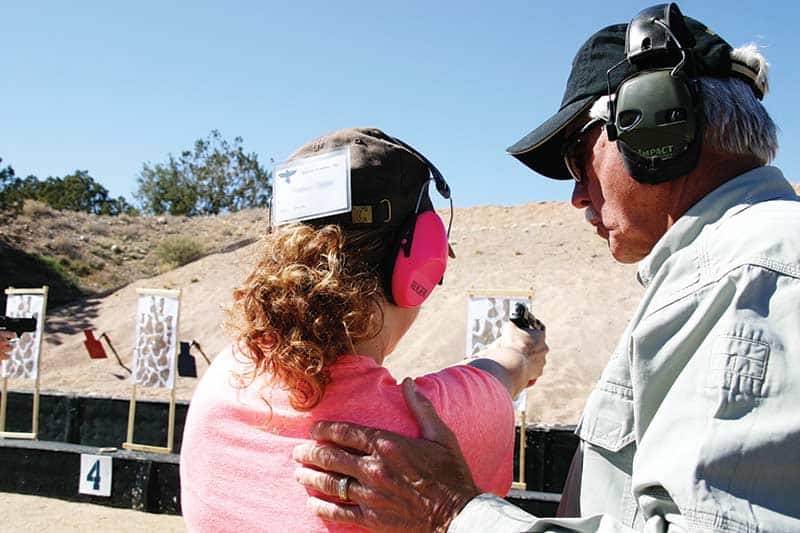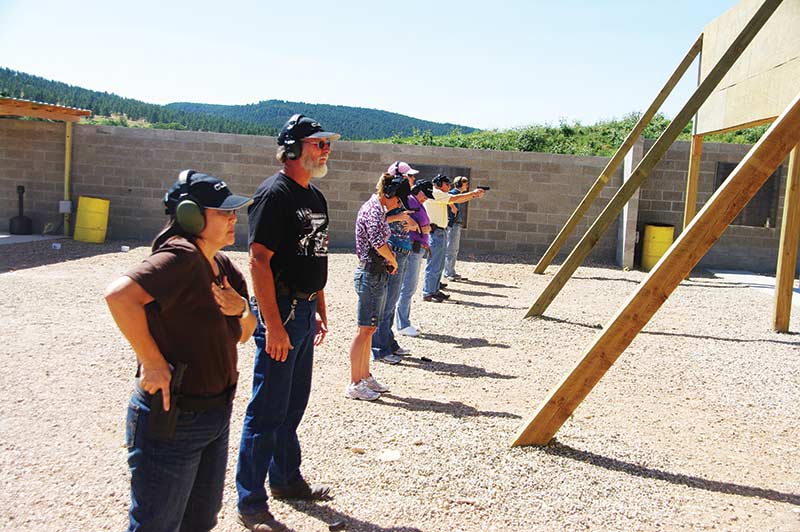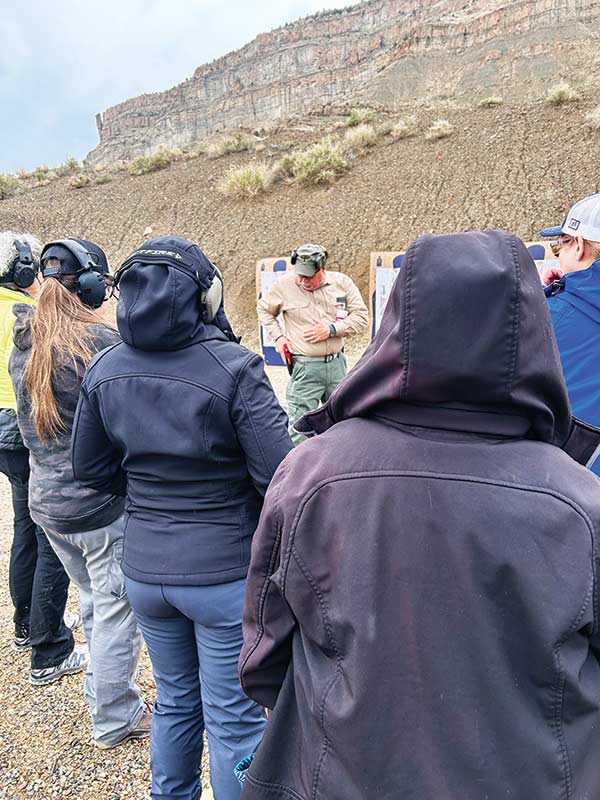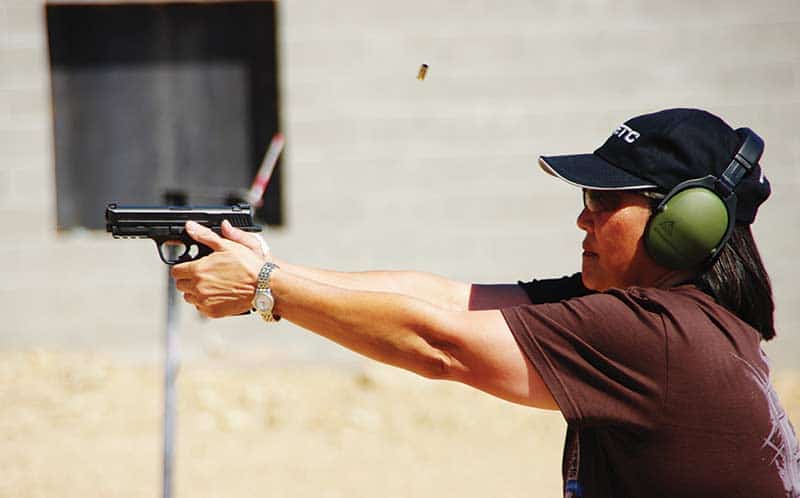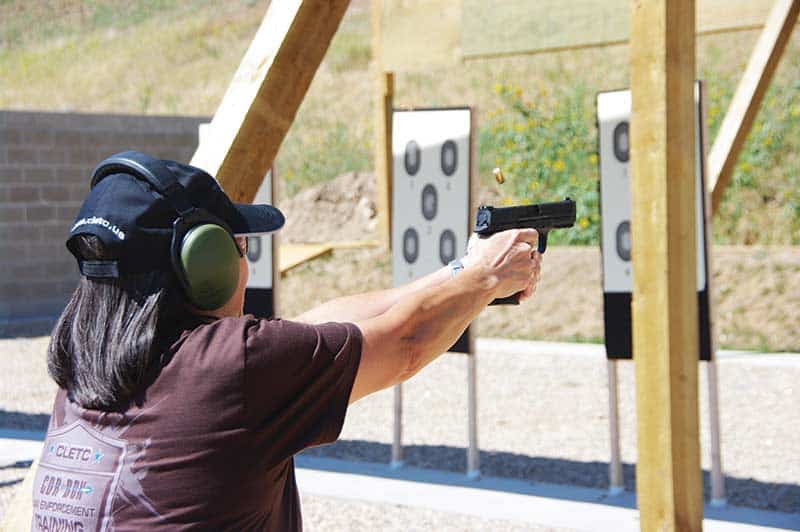Involving the Reluctant
Spouse In Training
Don’t take ‘No’ for an answer!
One of the cornerstones of firearms safety is properly preparing or training the “family” on the safe handling and/or use of firearms slated for home defense. Critically, your partner, spouse, or other adults in the home. Sounds easy, but in practice, it’s not and in fact, can be quite difficult. Not every spouse shares your affinity for firearms and differences can range from mild ambivalence to downright disdain. While they don’t need to be as enthusiastic as you, the need for safety exists either way, making it important. So, how do we deal with the reluctant spouse? It depends on each situation, and the degree of reluctance, but here are a few ideas to help.
Honest Communication
It’s important to be honest about what is necessary, and just as importantly, how willing they are to understand why. Everyone tends to appreciate honesty so keep it real. Whether you are looking for proficiency of use, or just safe handling, communicate it upfront. Not everyone wants or cares to be proficient, but most understand how important safety is. Use facts, not fear, in any explanation and keep it simple and direct. Clear communication, shared understanding and clear expectations establish buy-in. You can’t get everyone on the same page until you know exactly what’s on there, so take it slow and keep it honest.
So what’s next?
Involve them in what drives your interest in a positive way. In many cases, reluctance is based on fear or a lack of understanding. Keep it safe, and positive, and share why you enjoy it. Familiarity can break down barriers and firearms suffer from a ton of artificial barriers. Whether it’s cleaning, storage, or preparation, remove the fear by involving them in the process. If you compete, try to get them involved any way you can. Train regularly and invite them along to see what you do and why you enjoy it. It may spark interest in becoming more involved. Don’t push — that never works. Just bring them along for the ride and they may just start to like it, but at least they will understand it.
Start by establishing safe handling and proper safety protocols, which accomplishes a couple of things. First, it keeps you and your family safe, secondarily it can spark further interest. As family members become more accustomed to handling firearms, they realize they are not as scary as often depicted. Knowledge and familiarity are key, and most will be less reluctant to acquire further training.
Always be open, never disregard their fears, and remain positive. It’s likely they just don’t know what you do, and just want to know — especially if guns were not a part of their upbringing. Movement forward really needs to be their decision, not yours. Encouragement is key; maintain a positive attitude and keep it fun. Take every opportunity for increased interest and help it grow, allowing them to find what they like. People enjoy firearms for different reasons. Let them find their own reason for further involvement.
Thoughts
If they decide to pursue further training, there are a couple of critical issues. Most importantly, keep it positive, real, and above all enjoyable. Just because you think a 6″ .44 magnum is the ticket, don’t assume they will agree. In fact, the fastest way to turn away most new shooters is by handing them big, loud and heavy recoiling handguns to begin with. Start with a 9mm or similar. Remember, it’s all about them, not you.
Send them to a school you are not involved in. Training spouses and friends seldom works out as planned and can be more hindrance than help. Let them learn at their own pace with a reasonably-sized firearm they like, with people they like to be around and trust. Their first class is about initial learning so start them with a medium or full-sized handgun that fits their hands, probably in 9mm. Manipulations are easier, there is less recoil, it makes things fun and most everything translates to smaller guns. Most of the Smith & Wesson MP line, GLOCK, HK, there are a ton out there. But, just don’t drop them in class with a micro pistol that is a pain to run. If it’s not fun, they will lose interest in a hurry.
Above all, remember this is about sparking their interest. You are sharing your enthusiasm, not mandating some sort of requirement. Shooting guns is fun, but for many it takes some convincing and the best way is for them to have fun doing it. If not, you may never get them back and we need all the new shooters we can get!
About the Author: Dave Bahde has been a Gunsite Instructor since 2016 and a professional firearms instructor and consultant for over two decades. He is a recognized subject matter expert on firearms, tactics and use of force in both State and Federal courts.
Gunsite.com
